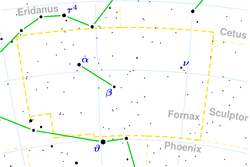IC 1826 color cutout rings.v3.skycell.0723.014.stk.4006098.4002718.3986936.unconv.fits sci
Autor/Urheber:
The Pan-STARRS1 Surveys (PS1) and the PS1 public science archive have been made possible through contributions by the Institute for Astronomy, the University of Hawaii, the Pan-STARRS Project Office, the Max-Planck Society and its participating institutes, the Max Planck Institute for Astronomy, Heidelberg and the Max Planck Institute for Extraterrestrial Physics, Garching, The Johns Hopkins University, Durham University, the University of Edinburgh, the Queen's University Belfast, the Harvard-Smithsonian Center for Astrophysics, the Las Cumbres Observatory Global Telescope Network Incorporated, the National Central University of Taiwan, the Space Telescope Science Institute, the National Aeronautics and Space Administration under Grant No. NNX08AR22G issued through the Planetary Science Division of the NASA Science Mission Directorate, the National Science Foundation Grant No. AST-1238877, the University of Maryland, Eotvos Lorand University (ELTE), the Los Alamos National Laboratory, and the Gordon and Betty Moore Foundation.
Attribution:
Das Bild ist mit 'Attribution Required' markiert, aber es wurden keine Informationen über die Attribution bereitgestellt. Vermutlich wurde bei Verwendung des MediaWiki-Templates für die CC-BY Lizenzen der Parameter für die Attribution weggelassen. Autoren und Urheber finden für die korrekte Verwendung der Templates hier ein Beispiel.
Shortlink:
Quelle:
Größe:
800 x 800 Pixel (95359 Bytes)
Beschreibung:
IC 1826 (or IC 1830) - PanSTARRS1
Lizenz:
Relevante Bilder
Relevante Artikel
IC 1826IC 1826 = IC 1830 ist eine Linsenförmige Galaxie mit ausgedehnten Sternentstehungsgebieten vom Hubble-Typ SB0/a im Sternbild Fornax am Südsternhimmel. Sie ist schätzungsweise 60 Millionen Lichtjahre von der Milchstraße entfernt und hat einen Durchmesser von etwa 30.000 Lichtjahren. Gemeinsam mit NGC 1079, NGC 1097, PGC 10479 und PGC 10709 bildet sie die NGC 1097-Gruppe. .. weiterlesen

